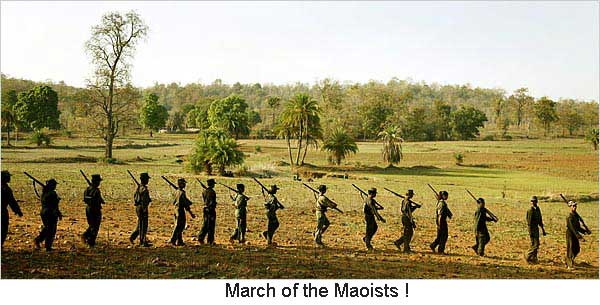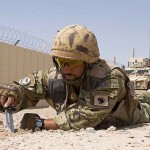On 07 January 2013, ten police personnel were killed in an ambush in the Karmatiya Forest of Latehar District. Nine of the killed were from the Central Reserve Police force (CRPF) and one was from the state’s special anti-Naxal force ‘Jharkhand Jaguars’. Fifteen police personnel also received gunshot injuries and were later evacuated to the Apollo Hospital in Erba on the outskirts of Ranchi. In addition, four civilians were killed while recovering the bodies of the dead policemen, some of which were booby trapped. This marked a bloody beginning to the New Year and indicates renewed focus of the Maoist to target police forces engaged in operations against left wing extremism (LWE).
While the ambush of police personnel has received a lot of media attention, there has been little focus on the structural weaknesses in the operational methodology of the Central Armed Police Forces (CAPF)…
The preceding two years had seen a dip in violence levels from the high of 2010 which saw 1180 deaths, of which 277 were from the police forces, 277 were terrorists and 626 were civilians. The numbers killed in 2011 dropped to 602 (128 police personnel, 199 terrorists and 275 civilians) and further dropped to 367 in 2012 (104 police personnel, 117 terroristand 146 civilians). The steep decline in terror levels led many to believe that the LWE movement was on the wane and that it would be but a matter of time when the extremists would be routed. Such claims have been made by different actors since 1967 but the movement is still alive and kicking primarily because causative factors have not been holistically addressed. In the instant case, an improvement in the situation over the last two years was the result of an apparent overreach by the Maoists in trying to spread their influence across the country, heavy attrition on Maoist leadership due to sustained and targeted operations by the police forces and the fact that ground operations by the security forces in the jungles were relatively few and far between.
The declining trend in terror related instances over the last couple of years was noteworthy but to assume that LWE was on the wane was perhaps presumptuous. The Maoist document ‘Strategy and Tactics of Indian Revolution’ forecasts that they will face a stage of ‘strategic stalemate’, which ‘will end in a shorter time’ and will progress to a stage of strategic offensive. By all accounts the movement is still in a phase of strategic stalemate and this situation is likely to continue for some time. Despite the reduction in fatalities over the last two years it would be a mistake to read in the situation a diminishing terrorist footprint and reduced capability. Violent incidents in the first two weeks of January amply indicate that Naxal groups are active and will need to be dealt with by force.
While the ambush of police personnel has received a lot of media attention, there has been little focus on the structural weaknesses in the operational methodology of the Central Armed Police Forces (CAPF) which leads to unnecessary loss of life of our men. The aspect of Maoist atrocities has been highlighted by the media but why should anyone expect the Maoists to treat the Security Force personnel with kid gloves? The Maoists are a terrorist organisation and they will do all in their power to cause maximum casualties to the police forces engaged in counter terror operations. Weaknesses in training and poor leadership are the prime reasons why so many casualties are needlessly suffered by the CAPF. This also gives the Maoists psychological dominance over the police forces. This aspect requires to be urgently addressed.
An immediate step which needs to be taken is that all CRPF units need to be trained as unit groups with their full complement of officers including the commanding officer and they must thereafter operate as a unit in a specific area of operation.
In the Latehar ambush, the police forces were well armed and had about 150 personnel. They were moving into an area where they had specific information of Maoist presence. While the intelligence provided to the police forces was of a general nature, it must be remembered that in counter insurgency operations, intelligence will rarely be of pin point accuracy. The police force should thus have been prepared for any eventuality. As they had gone to an area to take on armed Naxals, they should have been prepared for the ambush. And once the force had been ambushed, they should have taken adequate counter measures. It appears that the police force had not been adequately briefed or rehearsed on likely contingencies that could arise in the course of the operation. They lacked the training to carry out anti ambush drills once they were fired upon. Instead, the police force broke contact which left the battle area in the hands of the Maoists who exploited the situation by recovering the dead bodies of the policemen and booby trapping them. Had contact been maintained, it would not have been possible for the Maoists to do so. It would also not have been possible for them to place an explosive inside the body of two them – a belly bomb which mercifully was detected in time.
The dead were recovered two days later, on 9th January. Why did a 150 strong contingent leave their dead behind? This speaks of inadequate group cohesiveness and severe leadership deficits. Unless such aspects are rectified, the police forces are unlikely to get the better of the Maoists. An immediate step which needs to be taken is that all CRPF units need to be trained as unit groups with their full complement of officers including the commanding officer and they must thereafter operate as a unit in a specific area of operation. Training must encompass field and battle craft drills and battle procedures to be followed at the section, platoon and company level. The commanding officer must be with his men, living in similar conditions, taking similar risks and sharing the hardship of his command. Along with the company commanders, he must provide front line leadership. Officers of Deputy Inspector General and Inspector General rank must also make periodic visits to the company posts and spend a few days at the post with the men regularly every month.
The police force should have recovered the bodies of their fallen comrades themselves and not outsourced the same to the local villagers.
Another matter of concern is the use of civilians to recover the dead bodies of policeman. This is a task which should have been done by the police. As the bodies were booby trapped, four civilians were killed in the recovery process. It is unethical to have used civilians but more importantly, it speaks of a lack of esprit de corps within the group. The police force should have recovered the bodies of their fallen comrades themselves and not outsourced the same to the local villagers. The IG Operations, Mr SN Pradhan reportedly stated that they take the help of local villagers for use of local cots, bed sheets etc to carry bodies back. This practice must be stopped forthwith. The men must develop a bond for their comrades and do such tasks themselves with pride. Only then will group cohesiveness develop.
In the ultimate analysis, the police forces can be enabled by better equipment and weapons. But unless they are given the requisite degree of training in section, platoon and company level tactics, develop group cohesion and esprit de corps and are provided with good front line leadership, such instances as seen in Latehar will continue to occur. We owe it to our police forces to see that they are properly trained before they are sent out for such operations.






A sorry state of affairs prevails in our Central police organisations.I have been told by a ex Army Commando instructor that he witnessed the Training of police Commandos & had a shock-it was pathetic.One cannot expect these IPS officers to train the police forces properly in Counter Insurgency warfare. Considering the Prime min.statement that The internal security threat from Maoists is the biggest threat to india,It is time for the Indian Army to take over the Leadership,Training & operational command of all Anti -Maoist operations. The Rashtria Rifles experience will make it a natural sequence.